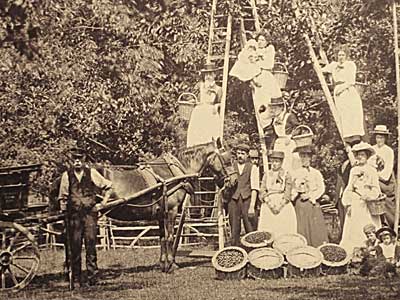Horses in the wars: War Horse
By Ruth D’Alessandro, The Wildlife Gardener The Wildlife Gardener has many and varied Favourite Things, among them being good puppet theatre, war stories and farm animals. So my ears metaphorically pricked up when Michael Morpurgo’s First World War novel, War Horse was adapted for the stage, featuring unique, life size horse puppets created by the Handspring Puppet Theatre Company, stage design based on the paintings of Paul Nash and a wistful folk-tinged score reminiscent of Vaughan Williams at his most lyrical. We heard so many good things about it that we finally got hold of a couple of gold-dust-like tickets and headed to the New London Theatre on a gloomy February night.
The miserable fate of the horses sent from England’s green fields to the battlefields of The First World War has long troubled me. In a period of history where the scale of destruction and suffering of people, nations, land and animals is beyond contemplation, focussing on one particular aspect of the horror can be the only way to approach it. The horses are my thing. In 1914-18, beloved family pets and dependable farm horses could be requisitioned by the army at any time. They were shipped to France and used to haul guns, ambulances, and ration carts. Horses were worked to death, drowned in mud, gassed, cut to pieces on barbed wire and blown apart by shells. They were starved, neglected and left to die by soldiers who had much bigger things to worry about. Yet soldiers on both sides of the conflict loved their horses. What happened to Barney, my great-grandfather’s glossy carthorse seen here in the cherry-picking Belle Époque of 1912?

Astonishingly as late as 1918, horses took part in cavalry charges ordered against machine guns:
They galloped up…as the German guns played on the infantry. They simply galloped on through all that, horses and man dropping with no hope against the machine guns. It was a magnificent sight. Tragic. (A British gunnery officer witnessing the charge of the 7th Dragoon Guards at the Battle of the Somme, 14th July 1916)
A couple of years ago, The Imperial War Museum held a wonderful exhibition, The Animals’ War, which celebrated the contribution of animals and birds to warfare. Apart from marvelling at the tenacity and bravery of carrier pigeons, one particular original painting had me hanging back from my group, snuffling surreptitiously into a hankie: ‘Goodbye Old Man’ by Fortunia Matania commissioned by the Blue Cross animal charity to raise money to relieve the suffering of war horses in Europe. So if a single painting could reduce me to a jelly, what would I be like after three hours of heart-wrenching theatre?’War Horse‘ has to be the single best piece of theatre I have ever seen. And I will be privileged if I ever see anything better. I loved the characters from the start, the skittish foal, the chain-link horse puppets each manned by three puppeteers, so believable that you expected dung on the stage. The story twisted and turned, swapped sides, threw up surprises, horrors, even humour. The pity of war for both man and animal was darkly hinted at, never too graphic. Most unbearable of all, the jagged metal hardware of warfare pitted against the soft flesh of horse and man, brutal and unnatural. I confess to taking out the first hankie when War Horse came on as a foal, and when the lights came up at the end I looked like some pink-nosed rheumy-eyed mole creature blinking in the light. I can’t recall going through an emotional wringer like War Horse before. Mr WG was complaining that he had some grit in his eye. One million horses were taken to France from Britain in the First World War. 62,000 came back. And I hope that Barney may just have been one of them.
- Spurn Spawn! - 26th February, 2014
- Bluebells on wheels: axles of evil? - 2nd February, 2011
- Raising the ba: Wildlife and the Ancient Egyptian Book of the Dead - 8th January, 2011


Thanks Wendy! And you too have a personal connection. This must be one of the reasons War Horse has been such a sell-out: it’s a direct connection with our own history. Unique.
Excellent piece, Ruth. “So believable that you expected dung on the stage” – I love that; it ought to be a poster quote! I agree with you, it’s tremendously powerful. After I saw it I immediately bought tickets for my parents and in-laws as Christmas presents. My in-laws – regular theatre-goers – have just returned and said it was the best performance they’ve ever seen.
We recently found out via a local history talk that a war horse from where we now live became very famous locally after surviving its heroic WW1 exploits and returning home. Part of our converted barn was quite probably once its stable. War Horse has brought that whole period of history to life for my eight-year-old son (though he was not impressed with the swearing in the play!).
Janet! How lovely to hear from you. And what a touching personal story from Isfield. We cannot fathom the enormous love and loss WW1 soldiers felt and suffered for their friends and animals. War Horse came close to conveying it, and that is why it is such a special piece of theatre. Go see.
Another fine article from the WG. In 1965 when living in the village of Isfield in Sussex we knew two old men who had both gone from the life of ordinary farm workers of the day to serve with the army during the war of 1914 looking after horses somewhere in France. I remember calling in to see one of them near what they still called Armistice Day and being completely thrown to see tears suddenly streaming down his face when he remembered a mate who had been killed next to him on the battle field. They both survived and came back to their farms which by the 1960’s of course were all run by machinery and the only horses seen around were for riding.